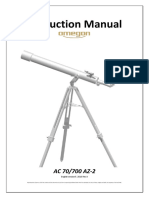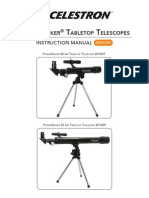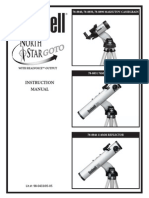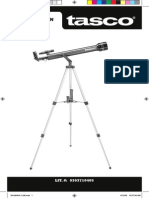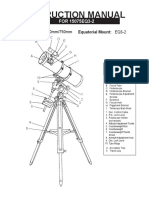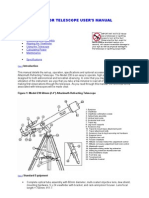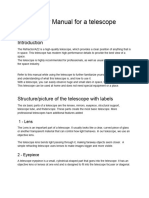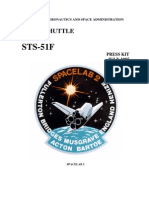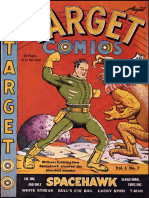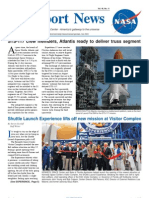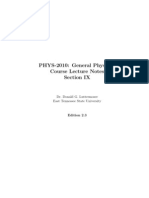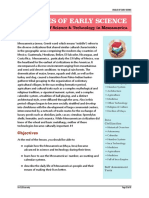Instruction Manual
Maksutov Telescope 90/1250 OTA
English version 10.2014 Rev A
Reproduction of part or all of the contents of this document in any form is expressly prohibited other than for individual use only. All text, images and labels are property of Nimax Gmbh.
�The Omegon® Maksutov Telescope 90/1250 OTA
Congratulations on the purchase of the new Omegon® Telescope Maksutov 90/1250 OTA. This
telescope tube is suited for both terrestrial and astronomical use. It is compact and easy to carry
around; it can also be used as a tele-objective or a high-power telescope. You can even use it to take
photos with a DSLR camera (not included).
1. Included parts. Besides the telescope tube we have included a finderscope, a finderscope
bracket and a soft carry case.
2. Getting started. It is very simple to get started. Here is how the telescope works. The telescope
aperture (lens) should be pointing to the object being observed. The light comes through the
aperture lens, to the mirror on the back and is then reflected to the small secondary mirror on the
telescope lens. There it is reflected again and so brought to the eyepiece. The eyepiece can be used
in two positions – top (#5) or back (#6) – see below. At the focuser one can use accessories.
Different accessory combinations give different results, such as different image magnifications. All
this will be explained in detail on the next pages.
2.1. Knowing your telescope.
1- Optical Tube; 7- Finderscope adjustment screw;
2- Dovetail adapter for telescope mount or tripod; 8- Focusing knob;
3- Finderscope adjustment screw; 9- Flip-Mirror System;
4- Finderscope; 10- DSLR Camera (not included);
5- Top eyepiece holder; 11- T-ring adapter (not included);
6- Back eyepiece holder; 12- Eyepiece (not included).
3. Assembly. Remove the telescope from the shipping box. Start by installing the finderscope tube
and finderscope bracket as shown in figure 1. Make sure it is pointing to the telescope’s aperture,
tighten it using the side finderscope thumbscrew (on the finderscope shoe base). You will need to
use a photographic tripod or a telescope mount (Vixen/Synta compatible dovetail) to mount the
tube (figure 2). Make sure you choose a stable tripod or mount for ease of use. The telescope’s
aperture should point to the object being observed. Choose a low magnification eyepiece (#12),
insert it into the top eyepiece holder (#5), and make sure to securely tighten the eyepiece using the
eyepiece holder thumbscrew. You may also use the eyepiece on the back eyepiece holder (#6). Use
the focusing knob (#8) to get a sharp (focused) image. The back eyepiece holder (#6) provides a
straight view for a DSLR camera. To use a DSLR camera with the telescope start by removing the
Reproduction of part or all of the contents of this document in any form is expressly prohibited other than for individual use only. All text, images and labels are property of Nimax Gmbh.
�camera objective lens and place the T-ring on the camera body (#11), thread the camera to the
telescope back eyepiece holder (#6), it should look like figure 3. The telescope includes a spring-
loaded flip-mirror system (figure 4). Switch from horizontal to vertical position to get straight-
through view, or from vertical to horizontal position to get top view (figure 4).
Figure 1. Install the finderscope. Figure 2. Place the tube on a suitable tripod or mount.
Figure 3. Telescope ready for imaging (camera, mount Figure 4. Flip mirror horizontal (light comes through back -
and eyepiece not included). #6 suitable for DSLR use).
ATTENTION! Never look at the Sun through a telescope.
Concentrated Sun light may cause serious eye injury.
Children should use with adult supervision only!
4. How to use and how to align the finderscope?
Reproduction of part or all of the contents of this document in any form is expressly prohibited other than for individual use only. All text, images and labels are property of Nimax Gmbh.
� 4.1. A distant object is centered at the
telescope’s field of view with an eyepiece. In this
example we have a house with a chimney. The
chimney is the reference point to place at the
center of the field of view. We first look through
the telescope with the lowest magnification
possible to get the widest field of view.
4.2. Looking through the finderscope we see the
same building, but in this case the chimney is not
centered. We adjust the finderscope using the
three thumbscrews, so that the finderscope
moves slightly. This is enough to correct the
objects position in the finderscope. Trial and
error is required to get a satisfactory result. Make
sure to tighten the 3 screws after finishing, so
that the finderscope tube does not move.
4.3. After playing with the three findercope
thumbscrews and some trial and error we get
the finderscope’s recticle close to the center (in
this case the chimney). The finderscope is now
ready to use!
5. What can be seen with this telescope?
Reproduction of part or all of the contents of this document in any form is expressly prohibited other than for individual use only. All text, images and labels are property of Nimax Gmbh.
�Below you will find some examples of what you can expect to see when using this telescope.
5.1. The Moon is one of the most spectacular
objects to be seen through a telescope. Even a small
telescope will reveal a lot of details of the Moon’s
surface. You will be able to see the craters on the
Moon’s surface and other features like the Marea.
The moon is a very bright object. It is better
observed when the Moon is not full. Try the
crescent Moon and look for features along the
terminator (between illumated and dark surfaces).
5.2. Jupiter is the biggest planets of our solar
system. It is also one of the most favorite targets for
beginners. Galileo was able to discover that the four
tiny dots that circle around the planet were in fact
part of Jupiter’s system of moons. With this
telescope you will not only be able to see Jupiter’s
planet disc with its two major discernible bands, but
also its biggest moons, Io, Europa, Ganymedes and
Callisto.
5.3. The “lord of the rings” of the night sky, Saturn
is by far the most popular target for small
telescopes. Saturn’s rings are discernible even at
60x magnification. In a very good night you will be
able to see the Cassini’s division (the darker band of
Saturn’s rings).
Reproduction of part or all of the contents of this document in any form is expressly prohibited other than for individual use only. All text, images and labels are property of Nimax Gmbh.
�6. Using the accessories: a bit of math to Telescope’s focal length is 1250mm;
understand how it all works. Omegon® Plössl 25mm eyepiece’s focal length
is 25mm;
Using accessories is easy and fun. To change
the magnification simply swap eyepieces. To
get more magnification simply use the barlow 1250𝑚𝑚
lens. But how does all of this work? = 50 𝑝𝑜𝑤𝑒𝑟
25𝑚𝑚
6.1. Power (magnification)
Your telescope has a focal length of 1250mm. This means that the 25mm eyepiece provides
This is approximately the distance between a 50x power (magnification). This seems low,
the telescope lens and its focal point (very but try it, you will see a bright image with
similar to the distance between the focus details.
point of a loupe and the loupe lens). This is a 6.2. Barlow Lens (not included)
very important feature, that allows to
determine several interesting facts such as The barlow lens is a very interesting device
magnification. (not included). It is a negative lens, that
multiplies the telescope’s focal length. A 2x
The magnification is determined by the Barlow, for example, multiplies the original
telescope’s focal length and the used focal length by 2x, in this case 1250𝑚𝑚 𝑥 2 =
eyepiece. 2500𝑚𝑚.
To determine the magnification just divide the A 3x Barlow lens multiplies by 3x.
telescope’s focal length by the eyepiece’s When used with a 25mm eyepiece you get 2x
focal length. Let’s give an example for our the power obtained before
telescope and some eyepieces: 50 𝑝𝑜𝑤𝑒𝑟 𝑋 2𝑥 𝐵𝑎𝑟𝑙𝑜𝑤 = 100 𝑝𝑜𝑤𝑒𝑟
Here are some examples on how to use the
accessories.
Some possible accessory combinations
Terrestrial Moon Deep Sky Jupiter and
View Saturn
Omegon® Plössl 25mm Yes Yes
Omegon® Plössl 9mm Yes
Omegon® LE 12.5mm Yes
Omegon® Moon Filter Yes
Omegon® UHC Filter Yes
Power 50x 139x 50x 100x
Technical notes
The two top and back eyepiece exit holders are not parfocal. The back eyepiece holder (#6) requires
an additional 5mm spacing to be parfocal with the top. We recommend using a 1.25” (31.75mm)
parfocalizing ring, if required.
For both DSLR use and eyepiece use we recommend using a 1.25” eyepiece extender at the top
eyepiece holder (#5) to push the eyepiece out and make it parfocal with the camera.
Reproduction of part or all of the contents of this document in any form is expressly prohibited other than for individual use only. All text, images and labels are property of Nimax Gmbh.
�7. Troubleshooting and frequently asked questions
Q: I can’t focus my telescope, but only get a bright circle.
R: Make sure you have inserted the eyepiece (start by the lowest power eyepiece). Point to a distant
object during the day and proceed as described in 3.
Q: When I use the barlow lens and a 6mm eyepiece, the image is so dark I can hardly see anything.
A: Power should be used with moderation. It depends on how stable the atmosphere is, too much
turbulence causes image distortion. Usually the limit is 2x for each millimeter of the telescope’s
aperture. In this case, the telescope has an aperture of 90mm, so in a very good night you should be
able to reach 180x. The more magnified the image is, the darker it gets.
Q: Is my telescope compatible with other eyepieces?
A: Omegon®telescopes are compatible with all telescope eyepieces from different manufacturers as
long as the eyepiece is a 1.25” (or 31.75mm) size eyepiece. If you would like to test an eyepiece from
a fellow astronomer, go ahead. Different eyepieces provide different visual experiences.
Q: The stars only appear as points in the telescope.
A: Stars will always appear only as points, even in the largest telescopes in the world. It is more
interesting for beginners to observe two-dimensional objects, such as the Moon or planets. Once you
find these, you will be able to start learning about the astronomical calendar.
Q: I would like to observe the Sun.
A: An appropriate solar filter, placed over the objective, is essential for observing the sun. Those are
available as plastic foil or glass filters. They allow only a tiny and harmless fraction of sun light into
the telescope, when securely positioned over the objective, allowing you to observe the sun in
complete safety. Eyepiece solar filters (not available from us) should be avoided at all costs as they
are considered unsafe. Note: Never look directly at the Sun through a telescope without an
objective solar filter!
Q: I can’t see anything, when I look through my telescope.
A: The telescope is only suitable for astronomical observing and when used outside at night.
Observing from inside the house or during the day is usually not possible.
The dust caps must first be removed and an eyepiece must be inserted, before you can start
observing. Are you sure you have removed all the dust caps, not just the small one? If you have not,
then no light will enter the telescope and everything will appear black.
Reproduction of part or all of the contents of this document in any form is expressly prohibited other than for individual use only. All text, images and labels are property of Nimax Gmbh.
�Annotations
For any other questions please feel free to drop a line or visit our website at: http://www.astroshop.de
nimax Gmbh Otto-Lilienthal-Str. 9
D-86899 Landsberg am Lech
Reproduction of part or all of the contents of this document in any form is expressly prohibited other than for individual use only. All text, images and labels are property of Nimax Gmbh.
